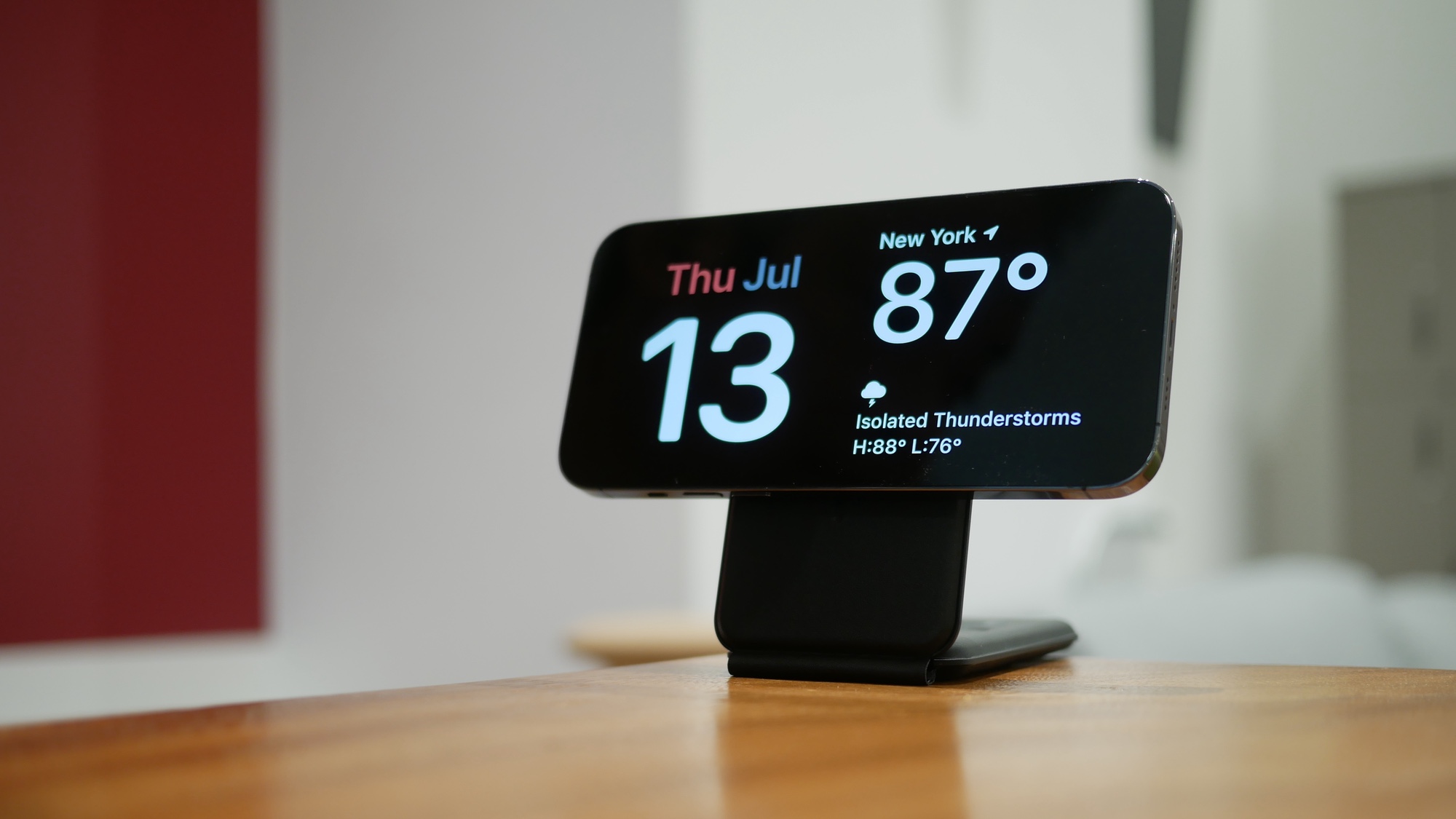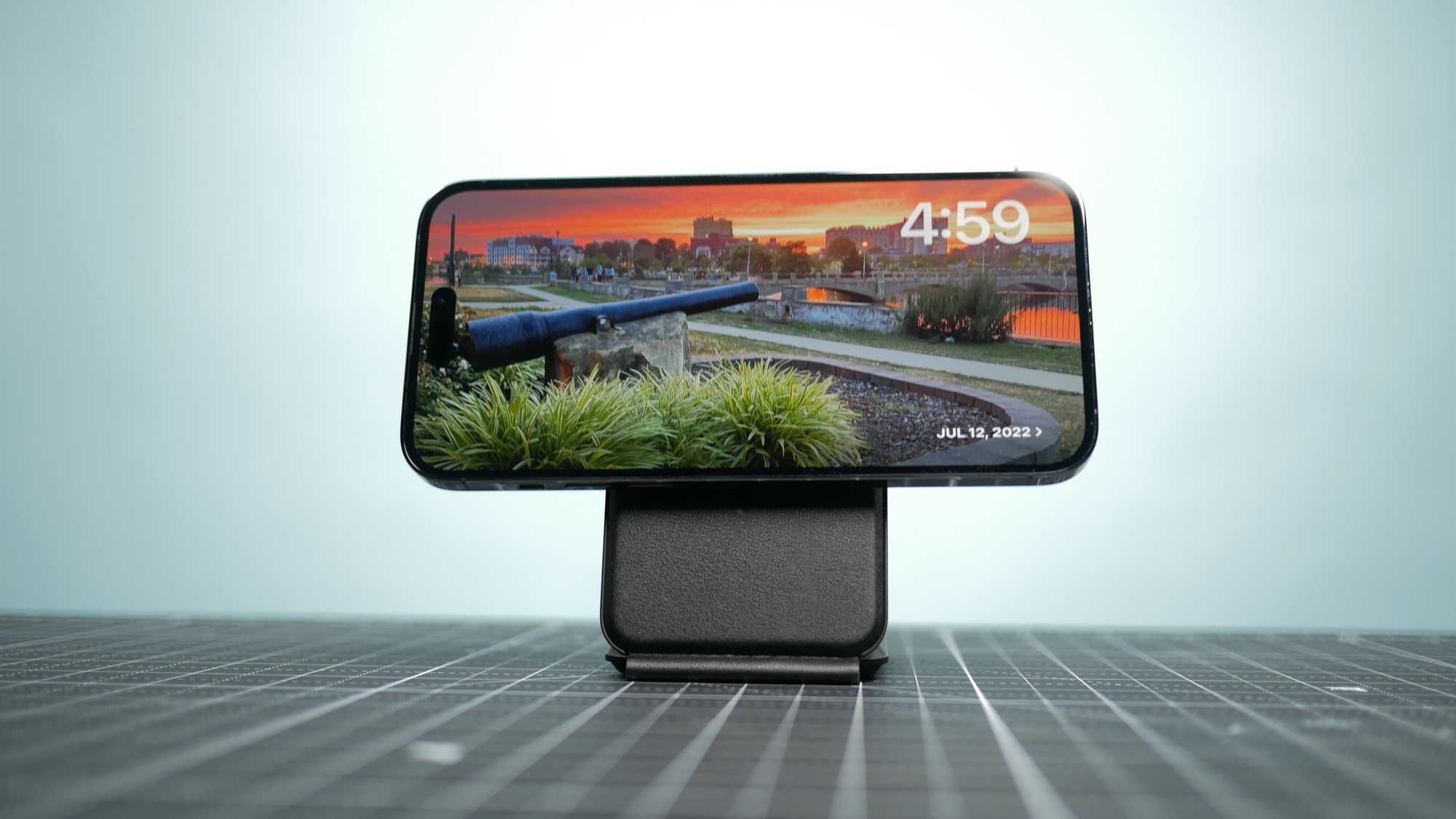iOS 17's StandBy Mode is amazing — but there’s a huge catch

With the iOS 17 public beta out for a week now, we can start forming some opinions about the features Apple will be bringing to the iPhone this fall when the full software update comes out. And if you've used iOS 17, I imagine one of the features at the top of your mind will be the new StandBy mode that leads the changes in this update.
As a brief reminder, StandBy mode is a new feature introduced in iOS 17 that essentially turns your iPhone into a smart screen when the phone is being charged and otherwise unoccupied. All you have to do is prop up your phone horizontally — a MagSafe-friendly charging stand makes this a lot easier — and charge the phone either through its Lightning port or wirelessly.
Our StandBy mode guide goes into greater detail about what you can do with the feature, but to make a long story short, StandBy can turn your iPhone into a clock, display widgets that show everything from the current temperature to your upcoming appointments or even scroll through a selection of your best photos. It's really a slick addition to the iPhone.
And yet having tested this and many other features for my iOS 17 beta hands-on preview, I think there's a limitation to StandBy that's going to keep the feature from its full potential for most iPhone owners.

Look, StandBy brings a lot to the table. I enjoy looking up at my phone when I'm in the living room and seeing photos I've taken staring back at me — all while my iPhone 12 is charging! And I could see the advantage of adding a charging stand to my bedroom, so that I can turn my phone into a bedside clock at night. It would seem to be a vast improvement over my current approach of... well, just laying my iPhone down on my nightstand where the only instance where it tells me the time is when I pick it up.
But I'm not going to add that charging stand to my bedroom, not while an iPhone 12 continues to be my primary phone. And that's because unless you have an iPhone with always-on display support, iOS 17's StandBy mode only works for a few fleeting seconds at a time.
When you attach your iPhone to a stand and start charging, StandBy mode immediately springs to life. But the clock starts ticking, too. And unless you're tapping on your display and scrolling through widgets, your iPhone screen will go to sleep after about 18 to 20 seconds of inactivity. Then, you'll have to tap the phone to wake it up again, and if you wait too long between taps, you may have to enter in your passcode again to unlock the device.
Get instant access to breaking news, the hottest reviews, great deals and helpful tips.
Suffice to say, these are not hurdles owners of the iPhone 14 Pro and iPhone 14 Pro Max have to jump through. Those phones do offer an always-on display feature so that when they're in StandBy mode, they truly become smart screens that you can interact with from across the room.

That is not my experience with my iPhone 12. When I've got StandBy mode set to display photos, the 18 to 20 seconds of awake screen time isn't long enough to cycle through one photo of a slideshow unless my phone's within arm's reach and I remember to tap the screen every 15 seconds. If I'm sitting on the couch and my iPhone is charging away on a book shelf several feet away, I can yell at Siri to wake up my phone, and Siri will yell back that I need to unlock my phone first. This is not an ideal way to live.
A brief glance at Apple's quarterly earnings reports for the last six months confirms that Apple has sold a lot of iPhone 14 Pro and iPhone 14 Pro Max models. But I'd hazard a guess that the vast majority of iPhones out there in the wild do not have always-on-display capabilities. And that means the vast majority of iPhone users are going to find StandBy mode pretty limiting.
If you want to try to find a silver lining in this, the arrival of StandBy mode in iOS 17 could be giving us a hint about what Apple's planning for future iPhones
If you want to try to find a silver lining in this, the arrival of StandBy mode in iOS 17 could be giving us a hint about what Apple's planning for future iPhones. It's a pretty safe bet that both iPhone 15 Pro models are going to retain the always-on display capabilities Apple introduced to its Pro phones last year. But with StandBy in place for iOS 17, I think there's a good argument to be made that the iPhone 15 and iPhone 15 Plus will add that capability, too.
That said, iPhone 15 rumors don't really support that guess. We've heard next to nothing about the iPhone 15 gaining always-on display support, while other rumors have suggested that the iPhone 15 and iPhone 15 Plus will continue to feature displays with 60Hz refresh rates. The lack of a variable refresh rate would seem to shut the door on an always-on display since it's the Pro models' ability to ramp down to a 1Hz refresh rate that keeps the feature from being a battery-killer. (Then again, if you're only engaging in StandBy mode when your phone's already plugged in, what concern is battery life?)
I think this is something Apple's going to have to address, whether it's by adding more iPhones that support always-on displays or figuring out some software work-around that keeps screens on during StandBy mode. As it stands, StandBy mode should be one of iOS 17's top enhancements, but its current limitations mean that far too few iPhone users will benefit from its full effects.
More from Tom's Guide
- How to set up StandBy Mode in iOS 17
- iPhone 15 vs. iPhone 15 Pro vs. iPhone 15 Pro Max: All the likely differences
- iOS 17 brings an awesome pro camera feature to your iPhone — here’s how to use it
Philip Michaels is a Managing Editor at Tom's Guide. He's been covering personal technology since 1999 and was in the building when Steve Jobs showed off the iPhone for the first time. He's been evaluating smartphones since that first iPhone debuted in 2007, and he's been following phone carriers and smartphone plans since 2015. He has strong opinions about Apple, the Oakland Athletics, old movies and proper butchery techniques. Follow him at @PhilipMichaels.

